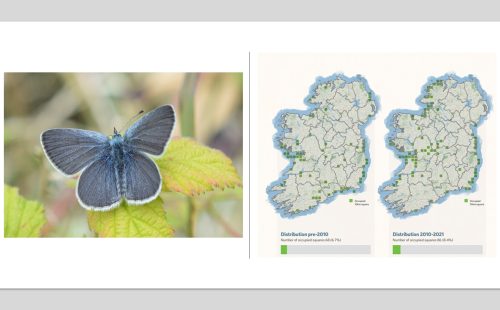Browse our Top 10
Comma (Polygonia c-album)
Comma is a recent arrival to Ireland. It was first recorded from Wexford in 2000 and since then has spread north-westward. Its arrival into Ireland is consider a natural occurrence. It is now commonly recorded across the southern half of the country. Comma is the species that has fared best since 2010, as the number of occupied 10km squares increased by 584%.
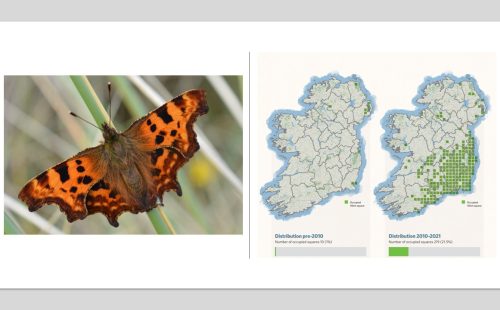
Essex Skipper (Thymelicus lineola)
Essex Skipper is another recent arrival to Ireland having been first recorded at Mayglass, Co. Wexford in 2006. It was found in an area of rough grassland among a young forestry plantation and its arrival is assumed to be human assisted. The species has spread slowly through County Wexford, radiating out from the site it was first recorded. It now occurs in suitable habitat across much of the south and east of the county. It has also been recorded from one additional site in County Kildare. It has show a 133% increase in the number of occupied 10km squares since 2010.
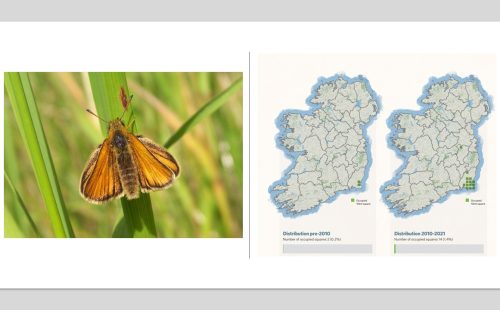
Holly Blue (Celastrina argolus)
Holly Blue is expanding its range in Ireland similar to the northward expansion evident from Britain. The number of 10km squares from where it was recorded has increased by 28% since 2010. It is most commonly seen in the southern half of the county but is increasingly been seen in the northwest and northeast of the island. It is thought that this range expansion is due to a warming climate. Holly Blue is prone to significant cyclical population cycles due to parasitism so populations might be at a peak in one of these cycles.
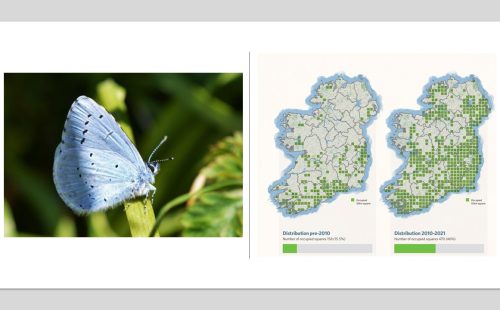
Dingy Skipper (Erynnis tages)
Dingy Skipper is a small, rather drab butterfly found in open stony grassland, often favouring limestone areas. It can be found on some cutaway bogs, open hillsides and dunes, along with human-made habitats such as woodland clearings, quarries, railway embankments and canal banks. Dingy Skipper was recorded in 26% more 10km squares since 2010, occurring at many new sites. It is unlikely that this increase was just an artefact of increased recording effort. The creation of favourable habitat conditions on well drained forestry tracks is likely to be at least one reason for its increase in midland counties.
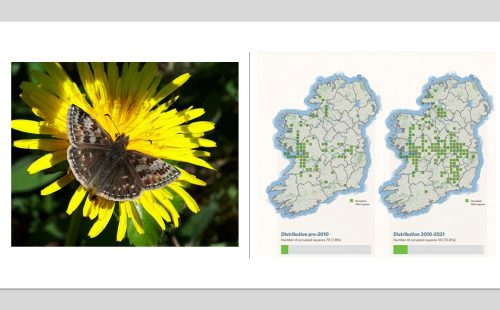
Silver-washed Fritillary (Argynnis paphia)
Silver-washed Fritillary is a species of open deciduous or mixed woodland where the canopy is interrupted by clearings, glades and rides, along with areas of patch scrub. In suitable habitat it can be very abundant. Its population appears to be doing well since 2010 having been recorded in 12% more 10km squares. The species appears to be taking advantage of the development of semi-natural woodland on cutaway bogs, abandoned land and Coillte’s practice of creating broad rides in forestry plantations.
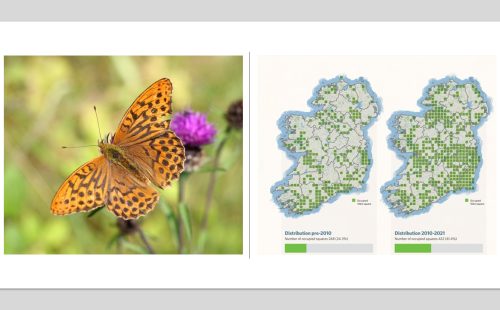
Wall (Lasiommata megera)
Wall experienced the most serious contraction in range of all species, occurring in -54% fewer 10km squares since 2010. It has disappeared from most inland sites and now occurs mainly at coastal sites. It was already classified as ‘Endangered’ in the Republic of Ireland and ‘Critically Endangered’ in Northern Ireland. The Atlas show the conservation fortunes of this species remain perilous. The reasons for its decline are thought to be excess nitrogen in the environment and climatic warming.
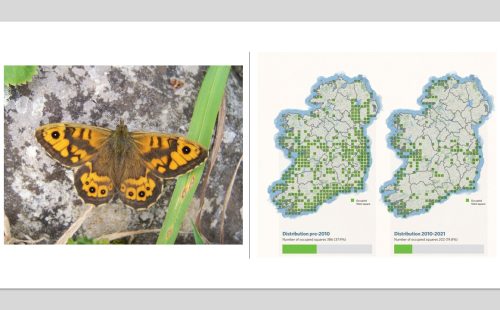
Large Heath (Coenonympha tullia)
Large Heath is one of Ireland’s habitat specialists that requires active and good condition raised bog to survive. Its distribution is determined by the distribution of active raised bogs, consequently it is largely absent from the south and eastern part of the island. Its population status is worrying as it was recorded in -32% fewer 10km squares since 2010. Draining and cutting of peat in recent decades has resulted in its loss from many of the sites where it used to occur.
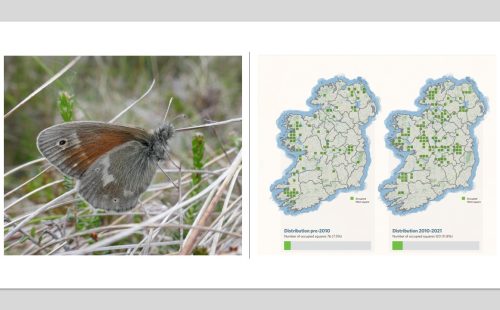
Grayling (Hipparchia Semele)
The Grayling is a species of open terrain with sparse vegetation and areas of sand or bare rock. It is most frequent on the coast in sand dune systems but can also be found in disused quarries, old mine workings and on rocky outcrops. Grayling has contracted in range since 2010, having been recorded in -28% fewer 10km squares. West Cork is now its stronghold in Ireland. The reasons for this are not fully understood. The reduction of extensive grazing by livestock in sites where it occurred, thereby reducing the areas of open exposed ground, is considered one of the factors for its loss from previously occupied sites.
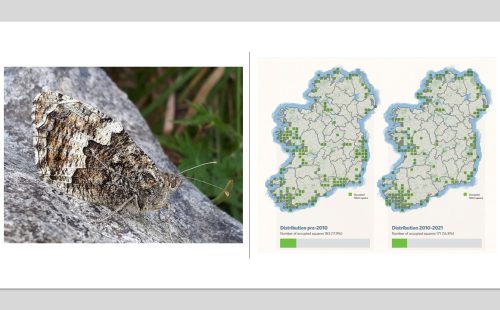
Gatekeeper (Pyronia tithonus)
Gatekeeper is found chiefly on unimproved grassland adjoining native hedgerows, field margins, open woodland and scrub predominantly near the south and southeast coast. It prefers a lightly grazed, sheltered and well-drained environment. It is now largely confined to the extreme southern part of the island, having been recorded in -24% fewer 10km squares. West Cork now appears to be its stronghold. Habitat loss through the decline in semi-natural grassland, including reductions in grassy margins of hedgerows are considered reasons for its decline.
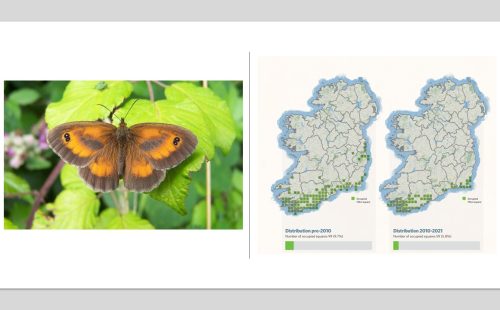
Small Blue (Cupido minimus)
Small Blue is a specialist species occurring at dry coastal and inland sites where its food plant, Kidney Vetch is abundant. Recent years has seen the species lost from many sites where the habitat quality has deteriorated. During the Atlas it was recorded in -16% fewer 10km squares. The absence of extensive grazing and erosion at coastal sites are thought to be some of the reasons for its loss from many sites.
